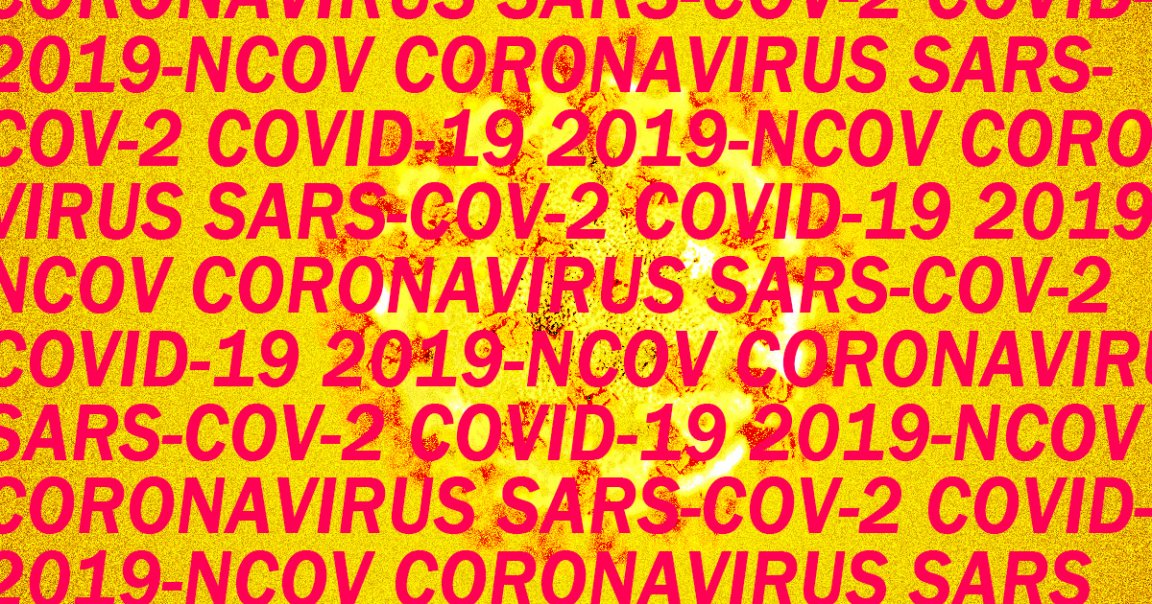
As the ongoing coronavirus outbreak continues to spread, sickening and claiming the lives of patients around the world, a plethora of confusing and occasionally-conflicting information is spreading along with it.
It doesn’t help that it took so long for the World Health Organization (WHO) to nail down an official name for the disease. Nor is it ideal that the name we know it by, the name of the actual virus itself, and the outbreak’s previous (unofficial) moniker are all fairly similar.
To help you — and ourselves here at Futurism, to be honest — stay on top of the vocabulary surrounding the outbreak, we put together the following glossary.
2019-nCoV
This is a now-outdated term that was used to describe the coronavirus linked to the outbreak before the WHO formally named it SARS-CoV-2 (see below). It’s an acronym that stands for the “novel CoronaVirus” discovered in 2019.
Coronavirus
The word coronavirus has served as an easy way to reference the ongoing outbreak, but it’s not terribly specific, since a coronavirus is a broad category of virus. There are hundreds of coronaviruses which, when they infect a human, cause diseases with flu-like symptoms. Think respiratory trouble, soreness, fever and, in more serious cases, pneumonia or kidney failure.
COVID-19
COVID-19, short for “COronaVIrus Disease 2019,” is the illness caused by a SARS-CoV-2 infection. You could say that a SARS-CoV-2 infection made someone come down with a case of COVID-19 — not unlike how the varicella zoster virus causes the disease chickenpox.
Mortality Rate
A mortality rate is a statistic that represents the proportion of people dying from a specific cause. In this case, it means the percentage of people who get COVID-19 and ultimately die, not a tally of total fatalities.
As of this story’s publication, China’s COVID-19 mortality rate is around 3.4 percent — higher than the mortality rate for the rest of the world, which is currently about 1.7 percent.
Pandemic
A pandemic is the term for an outbreak that’s spreading rampantly on an international or global scale, as opposed to a more localized epidemic.
The WHO maintains that the ongoing coronavirus outbreak is not a pandemic: even though cases have been confirmed in 41 global territories, most of the countries affected have more or less contained the disease thus far.
R0
Pronounced “R naught,” this is a statistical measure that represents how many people, on average, someone who’s infected with a disease will spread it to. Tracking down an R0 value for COVID-19 has been difficult, in part because mild cases can go undetected and also because some countries have been hit harder than others.
Different studies have arrived at wildly different R0 values for the COVID-19 outbreak, and the number likely won’t be solidified until after the fact — but thus far the WHO suggests the R0 lies between two and three.
SARS-CoV-2
This is the formal name of the specific coronavirus that’s causing a commotion right now.
The name is an acronym: “Severe Acute Respiratory Syndrome-related CoronaVirus 2.” SARS-CoV-2 is highly similar to the virus that caused the SARS outbreak in 2002 and 2003. In fact, when SARS-CoV-2 first emerged in Wuhan, China in December, one of the first doctors to send out a warning about it actually confused it for a resurgence of SARS.
Vaccine
A vaccine is a preventative tool that can strengthen the immune system against a disease. Administered in advance, a vaccine is different from a treatment or cure in that it doesn’t fight the virus directly — it just better equips your body fight it off and prevent the associated disease.
Specifically, a vaccine for SARS-CoV-2 would contain inert and harmless fragments of the virus. If your immune system is exposed to the vaccine, it would generate antibodies capable of fighting the virus in the future, ultimately preventing you from getting sick with COVID-19. Thus far, there are no vaccines available, though many teams are working on them.